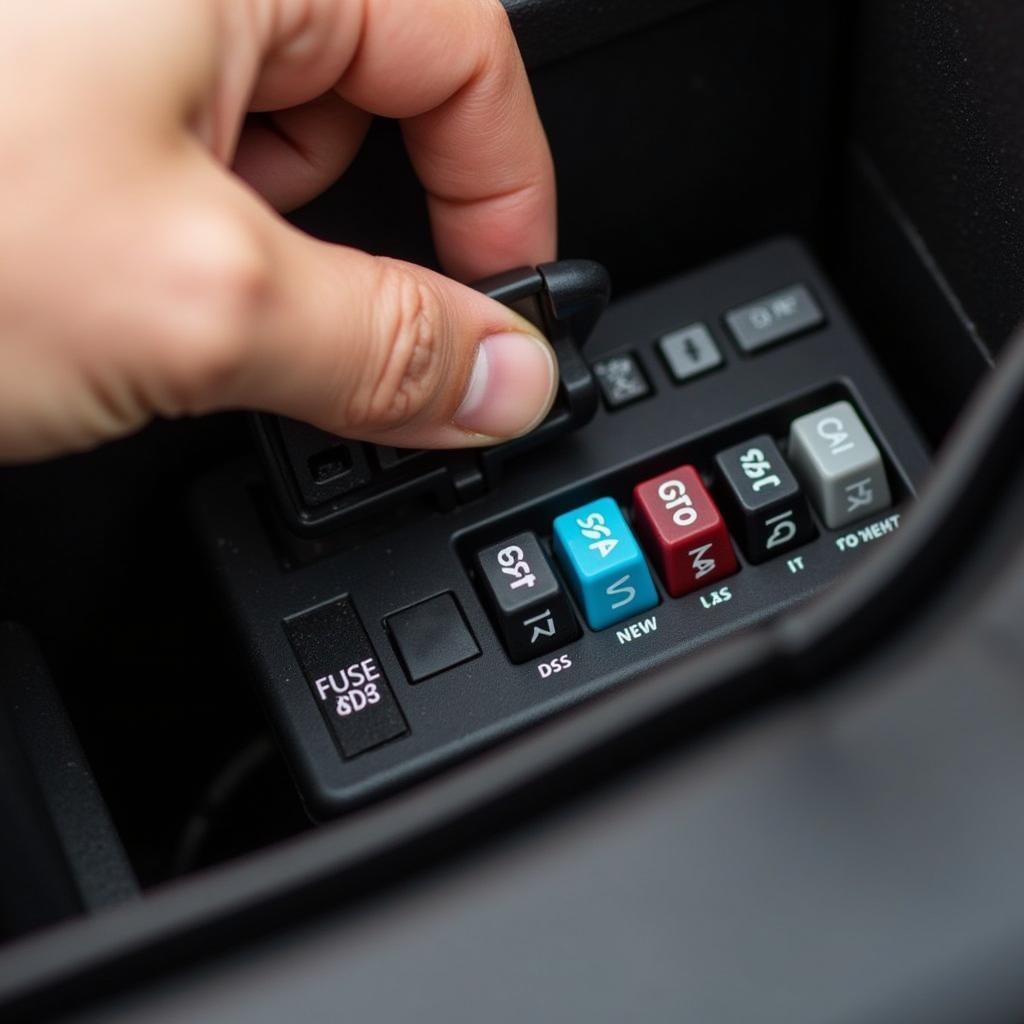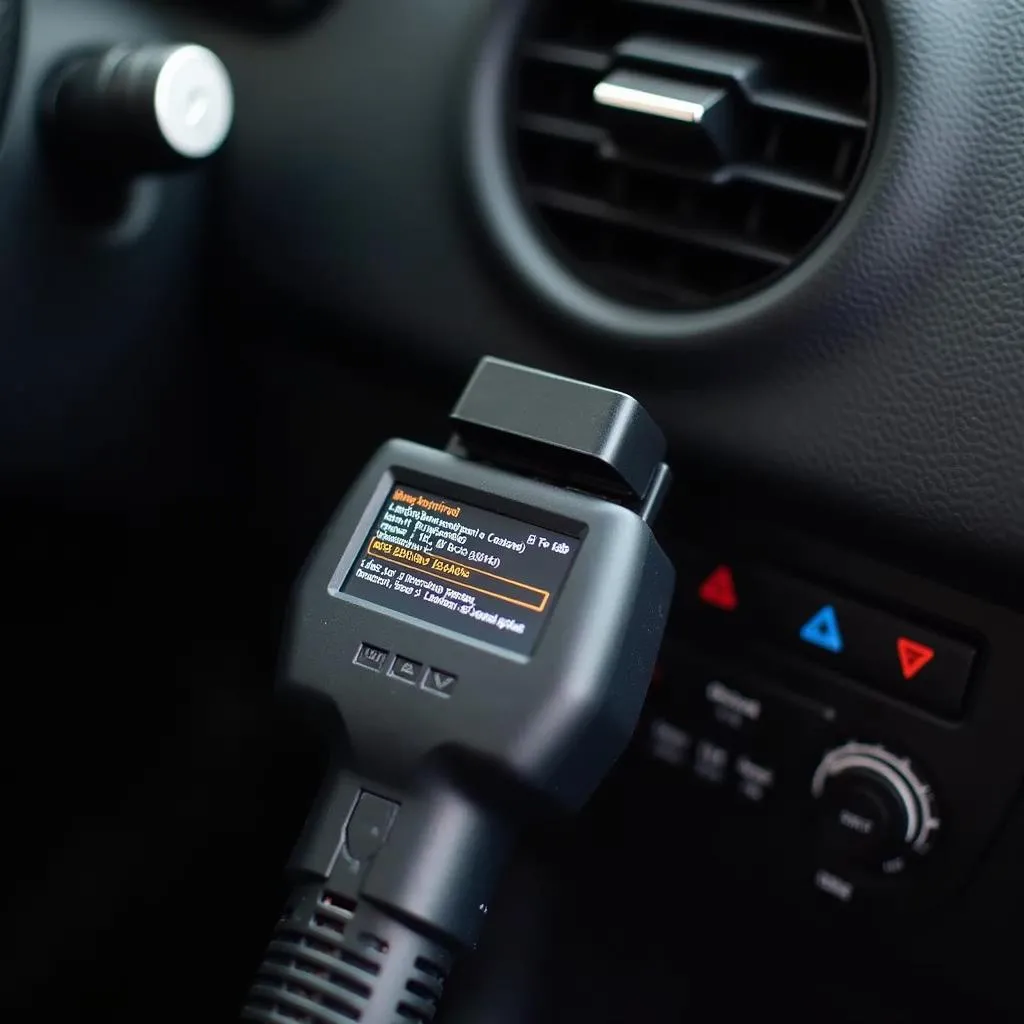If your Mercedes is displaying a brake warning light, even with new ceramic brake pads, this guide provides expert diagnostic advice, remote programming and software installation solutions for addressing the issue. We’ll delve into the common causes, troubleshooting steps, and how remote diagnostics and software updates can often resolve these problems. brake pad warning mercedes
Understanding the Mercedes Brake Warning Light
The brake warning light on your Mercedes dashboard is a crucial safety indicator. While it can illuminate for several reasons, including low brake fluid or a malfunctioning ABS system, it’s also tied to the brake pad wear sensors. Even with new mercedes brake warning light ceramic pads, a persistent warning light signals a deeper problem requiring immediate attention. This could range from faulty sensors to software glitches.
Why is your Mercedes brake warning light still on with new ceramic pads? It could be due to a number of issues, ranging from simple wear sensor malfunctions to more complex electronic control unit issues.
What are the common causes for this issue? Let’s explore them in the next section.
Common Causes of a Persistent Brake Warning Light with New Ceramic Pads
There are several reasons why your Mercedes brake warning light might stay on even after replacing your brake pads with ceramic ones.
-
Faulty Brake Pad Wear Sensor: The most common culprit is a malfunctioning or improperly installed brake pad wear sensor. These sensors are small wires embedded within the brake pad material. When the pads wear down to a certain point, the sensor breaks, triggering the warning light. Sometimes, a new sensor can be defective or damaged during installation.
-
Wiring Issues: Damaged or corroded wiring leading to the brake pad wear sensor can also cause the light to illuminate. A break in the wire or a poor connection can interrupt the signal, falsely indicating worn pads.
-
Brake Fluid Level: Low brake fluid can also trigger the brake warning light. While seemingly unrelated to the pads themselves, it’s crucial to check your brake fluid level as a first step in troubleshooting.
-
Software Glitches: Modern Mercedes vehicles rely heavily on software to monitor various systems, including the brakes. Occasionally, a software glitch can cause the brake warning light to illuminate even when there’s no physical problem with the brakes.
Troubleshooting the Brake Warning Light
Before heading to a mechanic, there are several steps you can take to troubleshoot the persistent brake warning light.
-
Check the Brake Fluid Level: Locate the brake fluid reservoir under the hood and ensure the fluid level is within the recommended range. If it’s low, top it off with the correct brake fluid type specified in your owner’s manual.
-
Inspect the Brake Pad Wear Sensors: Visually examine the brake pad wear sensors. Ensure they are properly connected and not damaged. If you recently replaced the pads yourself, double-check that the sensors are correctly installed in the designated slots.
-
Check for Wiring Issues: Trace the wires leading to the brake pad wear sensors and look for any signs of damage, corrosion, or loose connections. If you find any issues, repair or replace the wiring as needed.
brake pad warning light mercedes
Remote Diagnostics and Software Solutions
If the basic troubleshooting steps don’t resolve the issue, remote diagnostics and software solutions can be extremely effective.
-
Remote Scanning: Specialized diagnostic tools can be used remotely to scan your Mercedes’ control modules and pinpoint the exact cause of the warning light. This eliminates guesswork and allows for targeted repairs.
-
Software Updates and Reprogramming: Software updates and reprogramming can address underlying software glitches that might be triggering the warning light. These updates can be installed remotely, saving you a trip to the dealership.
“Remote diagnostics is revolutionizing car repair,” says John Miller, Automotive Systems Engineer at CarDiagTech. “It allows us to quickly and accurately identify problems, often without the need for a physical inspection.”
Mercedes E320, ML350 and Other Models
While the general principles apply to all Mercedes models, certain models might have specific quirks related to the brake warning light system. For instance, issues specific to the mercedes e320 brake warning light ceramic pads or ml350 brake pad warning could be related to model-specific software or sensor configurations.
“Knowing the specific model helps us tailor the diagnostic and repair process for optimal results,” adds Maria Sanchez, Lead Diagnostic Technician at CarDiagTech. “This ensures we address the root cause efficiently and effectively.”
Conclusion
A persistent mercedes brake warning light ceramic pads can be frustrating, but with the right approach, it can be resolved effectively. By understanding the potential causes, performing basic troubleshooting steps, and leveraging remote diagnostics and software solutions, you can quickly identify and address the root of the problem. Don’t ignore the warning light – address it promptly to ensure your safety and the longevity of your Mercedes.
FAQ
- Can I drive with the brake warning light on? It’s best not to. Have it checked immediately.
- How much does it cost to replace a brake pad wear sensor? The cost varies but is generally inexpensive.
- Are ceramic brake pads better than standard pads? They offer improved performance and longevity.
- Can I reset the brake warning light myself? It depends on the cause and model.
- How often should I check my brake fluid? Check it at least once a month.
- What is remote diagnostics? It’s a way to diagnose car problems remotely using specialized software.
- Can remote diagnostics save me money? Yes, by pinpointing the issue quickly and accurately.



